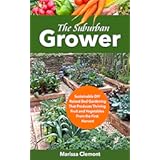Transform Your Garden: Creative DIY Ideas & Essential Plant Care Tips
Are you looking to infuse personality and functionality into your outdoor space without breaking the bank? The captivating visuals in the video above surely spark inspiration, showcasing numerous inventive ways to enhance your garden through simple, hands-on projects. However, truly understanding the underlying principles of successful DIY garden transformations and effective plant care provides an even greater advantage for any aspiring gardener. This comprehensive guide delves deeper into practical strategies, helping you cultivate a beautiful and flourishing garden with your own two hands.Engaging in DIY garden projects offers a unique blend of creativity and sustainability, transforming ordinary spaces into extraordinary green havens. Building garden elements yourself often proves far more satisfying than purchasing pre-made items, allowing for significant cost savings. Moreover, personalized touches ensure your garden perfectly reflects your individual style and specific needs, making it a truly unique outdoor sanctuary. These efforts also contribute to a greener planet by repurposing materials and fostering a deeper connection with nature.
Creating beautiful garden features doesn’t require extensive experience or expensive tools. Many ingenious solutions involve materials you might already possess or can easily acquire for minimal cost. Embracing the DIY spirit allows you to craft functional and decorative elements, from charming planters to efficient watering systems. This approach emphasizes resourcefulness, encouraging gardeners to see potential in everyday objects. Furthermore, understanding basic garden design principles can help you arrange these DIY elements effectively, maximizing both beauty and utility.
Clever DIY Garden Projects to Enhance Your Outdoor Space
Numerous imaginative DIY garden projects exist, offering solutions for various challenges and aesthetic preferences. These projects range from practical innovations to decorative accents, each adding character and efficiency to your garden. Embracing a do-it-yourself mindset encourages experimentation and allows you to tailor your garden features precisely to your personal taste. Consider these categories of budget-friendly garden projects when planning your next outdoor adventure.Innovative Container Gardening Solutions
Container gardening offers immense flexibility, particularly for those with limited ground space or challenging soil conditions. Repurposing everyday objects into stylish planters exemplifies smart, sustainable gardening practices. Old tires, for instance, can be painted vibrant colors and stacked to create intriguing multi-level planters, adding a bold statement to any patio. Similarly, wooden pallets are incredibly versatile; they can be disassembled and rebuilt into raised garden beds or vertical planters, optimizing space. Moreover, even discarded metal cans, once cleaned and decorated, make charming small herb or flower pots.These creative containers not only look appealing but also provide practical benefits for your plants. They allow for better control over soil quality and drainage, two critical factors for plant health. Furthermore, movable containers enable you to adjust plants’ sun exposure throughout the day or year, which is particularly useful for sensitive species. You can easily move delicate plants indoors during colder months, protecting them from harsh weather conditions. Ultimately, thoughtful container choices enhance both the aesthetic and ecological aspects of your garden.
Upcycled Garden Decor and Furniture
Transforming discarded items into functional and beautiful garden decor is a cornerstone of sustainable DIY gardening. Old wooden ladders, for example, can be repurposed into rustic shelving units for displaying potted plants or decorative lanterns. This vertical display adds visual interest and maximizes planting space within compact areas. Another excellent idea involves using old bricks or stones to construct charming garden paths or elegant borders for flower beds. Such simple additions greatly enhance the garden’s structure and visual appeal.Beyond decorative elements, consider upcycling for practical garden furniture pieces. Spools from electrical cables, often found at construction sites, make surprisingly sturdy and unique outdoor tables. With a fresh coat of paint and perhaps some mosaic tiles, they become attractive focal points. Even old plastic bottles can be cut and linked to create protective cloches for young plants or used in innovative self-watering systems. These budget-friendly garden solutions not only save money but also reduce waste, embodying the true spirit of eco-conscious living.
Mastering Essential Plant Care: A Foundation for Success
While DIY projects add charm and structure, the true health of your garden rests upon sound plant care principles. Understanding fundamental plant needs ensures your greenery not only survives but thrives, yielding beautiful blooms and abundant harvests. Effective plant care involves more than just watering; it encompasses proper soil management, appropriate light exposure, and vigilant pest control. Beginners especially benefit from focusing on these core elements before tackling more advanced gardening techniques.Understanding Your Soil: The Heart of Your Garden
Healthy soil provides the essential nutrients and structure necessary for robust plant growth. Different plants have varying soil preferences, though most thrive in well-drained, nutrient-rich loam. Testing your soil’s pH level and nutrient composition periodically can provide valuable insights, guiding your amendments. You can purchase simple home testing kits or send a sample to a local extension office for more detailed analysis. Amending soil with organic matter, like compost or aged manure, consistently improves its texture, water retention, and fertility.Conversely, compacted or nutrient-depleted soil actively hinders root development and nutrient uptake, leading to stressed and unhealthy plants. Improving soil quality takes time and consistent effort, but the rewards are evident in vibrant, vigorous plants. Incorporating cover crops during off-seasons also helps rejuvenate soil naturally, preventing erosion and adding organic matter. Remember, focusing on soil health is perhaps the most crucial step in ensuring long-term garden productivity and vitality.
Watering Wisdom: Keeping Your Plants Hydrated
Proper watering techniques are paramount for plant survival, yet they are often misunderstood by novice gardeners. Overwatering can be just as detrimental as underwatering, leading to root rot and fungal diseases. A general rule involves watering deeply and infrequently, encouraging roots to grow deeper into the soil in search of moisture. Checking the soil moisture by hand before watering, rather than sticking to a rigid schedule, prevents both extremes. Insert your finger about an inch or two into the soil; if it feels dry, then it’s time to water.The best time to water plants is typically in the early morning, allowing the foliage to dry before nightfall, which reduces the risk of fungal issues. Conversely, watering in the midday heat often leads to significant evaporation, wasting precious water. Grouping plants with similar watering needs also helps optimize water usage, preventing some plants from drying out while others are waterlogged. Implementing efficient irrigation methods, like drip systems or soaker hoses, further conserves water and delivers it directly to the root zone.
Light Requirements: Matching Plants to Their Perfect Spot
Sunlight is the primary energy source for most plants, and understanding their specific light requirements is crucial for placement. Plants are generally categorized as full sun (6+ hours of direct sun), partial sun/shade (3-6 hours of sun), or full shade (less than 3 hours of sun). Observing your garden throughout the day helps you identify sunny and shady spots, guiding your planting decisions. Mismatched light conditions frequently cause stunted growth, poor flowering, or leaf scorching.For example, fruiting vegetables like tomatoes and peppers demand abundant sunlight to produce a good harvest, thriving in full sun locations. However, delicate leafy greens like lettuce might bolt (go to seed prematurely) in intense, prolonged sun, preferring partial shade. Knowing each plant’s ideal light conditions prevents disappointment and ensures healthy, productive growth. Thoughtful placement truly contributes to a harmonious and flourishing garden ecosystem.
Effective Pest and Disease Management
Vigilant monitoring and early intervention are key to managing garden pests and diseases without resorting to harsh chemicals. Regularly inspecting your plants for signs of trouble, such as discolored leaves or tiny insects, allows you to address issues before they escalate. Many common pests, like aphids or spider mites, can often be dislodged with a strong spray of water from a hose. Introducing beneficial insects, like ladybugs, also provides natural pest control, creating a balanced ecosystem.For more persistent problems, organic solutions such as neem oil or insecticidal soap offer effective alternatives to synthetic pesticides. Proper plant spacing also improves air circulation, which significantly reduces the incidence of fungal diseases. Removing diseased plant parts promptly prevents the spread of pathogens to healthy plants. Ultimately, a proactive and holistic approach to pest and disease management fosters a resilient and thriving garden environment.







